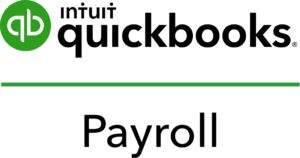In the current tech-enabled, hyper-connected business environment it’s hard to do anything without software. Payroll is no different. In fact, you must use software for payroll – there’s no other option except in very limited circumstances.
Payroll software sends RTI (Real Time Information) to HMRC on or before your employees’ payday. Known as a Full Payment Submission (FPS) it tells HMRC about payments to your employees and what deductions you’ve made.
But how do you know which package is best for your business? Read on to find out.
‘You have to use software for payroll – there’s no other option except in very limited circumstances’
Do it yourself payroll
First, the basics. Before you take on your first member of staff you must take steps to ensure they’re paid on time, and that the relevant authorities are kept in the loop.
Register yourself as an employer with HMRC and get a login to the PAYE Online service. You can use this service to check what you owe HMRC, pay your bill, etc.
Then it’s a case of keeping your records up to date and feeding accurate information to HMRC at the right time. This includes salaries, expenses, employee subsidies, pension contributions, and the timing of your payroll runs – plus more besides.
While the tax year-end isn’t not as onerous as it used to be, it’s important to keep track of deadlines and ensure you are prepared. You don’t want to leave it to the last minute only to discover you’ve mislaid your HMRC login details.
It’s a lot simpler if you operate as a sole trader or limited company with only a small number of directors and no other employees. But you must still register for PAYE, file a P60 and an end of year return, as well as the month-by-month details of your salary, benefits, and expenses.
Discover more around small business payrollWorking with payroll software
You must use software for payroll – there’s no other option except in very limited circumstances. But on the plus side payroll software processes the financial information you input and, with automation, smooths the process of paying your people, while tracking and maintaining the financial information this creates.
Payroll software is designed with features to help you make the right choices dependably and securely. It might offer the option to connect with your banking provider so that financial information is logged without you having to manually input data, saving time and potentially also costly errors.
In short, the benefits of payroll software are that it is custom designed for the job, easier to maintain, reduces human error, and speeds up the process of inputting and filing information.
Of course, you must pay subscription fees – how much depends on your provider and the level of service you require – and you might need training or even additional staff members to keep your information up to date.
6 questions to ask before choosing payroll software
If you’re serious about adopting payroll software to help you compensate staff, provide benefits and comply with HMRC’s rules and regulations, then there are a few questions to ask yourself before choosing any specific package.
What services do I need?
The best software providers offer packages tailored to different types of businesses, from director-only operations, to growing firms with dozens of staff members. Take your time to understand what’s right for you.
How do I pay?
Like most software these days, many payroll providers offer their products “as-a-service”, so instead of paying a large upfront fee, you pay a subscription on a monthly or annual basis to use the software. And you might get a discount for paying for a period in advance.
Is it easy to set-up?
Your provider must show that their system integrates easily with your organisation’s everyday processes. Look for information on the set-up process and ask customer service staff for details of how this works, and whether any free training is provided for new customers. What does it involve, how long might it take, and what help will you receive?
Is your provider reputable and secure?
Read reviews online and ask your peers for their views on the reputation of the software company you want to use. Look, in particular, for feedback on security, customer service, and ease of use.
Can you try before you buy?
Market-leading payroll software companies are proud of the service they provide and should be confident that you’ll buy if you’re allowed to try. Ask about trial periods or money-back guarantees – these are your “get out of jail free cards” in the event you make the wrong decision.
Is it cloud-based and how many users am I allowed?
Cloud-based software is accessible anywhere, so long as you have the right login details and permissions, so it’s a lot more flexible from a user’s point of view. It’s also more secure in most cases, because information is stored on dedicated servers and not, for example, on a computer in your office. Make sure you have enough licences to cover your team.
Payroll software can be a quick, efficient and no-nonsense way to run your company payroll, leaving you more time to focus on boosting your business. By taking your time and picking the best possible service for your business, you could see returns for many years to come.
SmallBusiness.co.uk has teamed up with Intuit Quickbooks to help you find the right Payroll software for your business. To find out more about getting your payroll and business finances all in one place, click here

Read more
Small business employees show little tolerance for payroll errors





